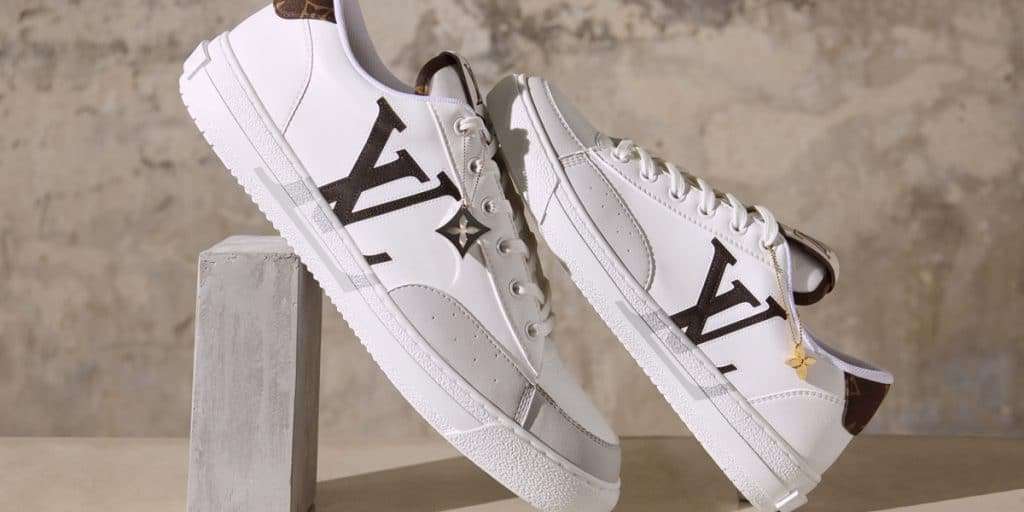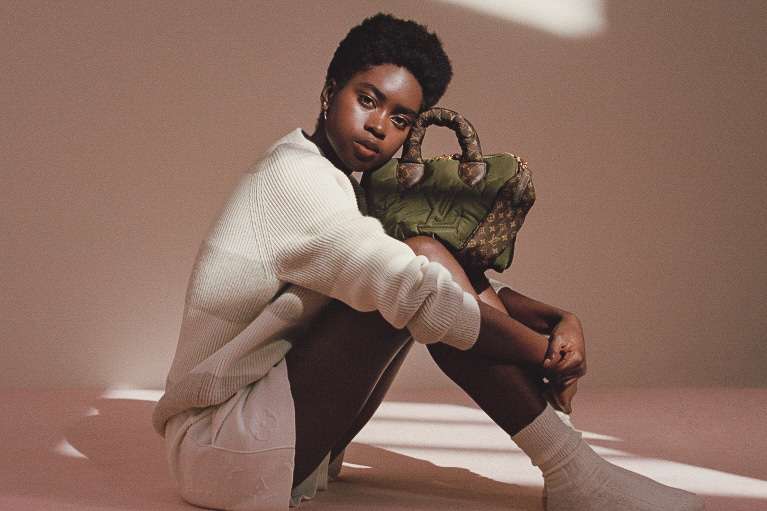Luxury fashion label Louis Vuitton is moving full steam ahead toward a sustainable fashion future, even if its clients are dragging their heels.
By 2025, Louis Vuitton says it will reach 100 percent on its sustainability goals.
Many of these goals are already in progress: The luxury brand says it already reuses or recycles 93 percent of its event and window materials; 69 percent of its energy use for workshops and logistics sites in renewable; 52 percent of raw materials are certified sustainable; 32 percent of store networks use LED lighting; and 33 percent of all its product categories incorporate an “eco-design process” including life-cycle assessments. It’s all part of what Vuitton calls a “committed journey.”
“If we want to make durable, lasting, impactful change, we have to have agreed-upon ways of measuring it, or else progress will not be made, and we’ll just be stuck in PR statements,” Michael Burke, Vuitton’s chairman and chief executive officer, told WWD in 2021. “The industry has to go beyond PR statements, and get down and start doing the tedious, yearlong efforts that are required.
“This is not something that we’re just starting, but we’re starting to communicate about it because we have facts, and we have enough experience to make committed statements and goals.
“All of these efforts have to be global and mutualized,” Burke said. “A single player will not move the needle.”
And that means re-orienting its customers, too. Getting them to accept minor imperfections, use items for longer, and rely on repairs that may not be perfect, but extend the life of items.
Moving the eco needle
The French label is the world’s largest luxury brand by revenue. And there are robust climate objectives for 2030: a 55 percent reduction in greenhouse gas emissions. (It recently announced it was turning down the lights and thermostats in stores to reduce energy use.) These targets were recently validated by the Science Based Targets initiative, a partnership between CDP, the United Nations Global Compact, World Resources Institute, and the World Wide Fund for Nature in a move the brand says underscores its commitment to circular creativity and responsible sourcing.
As part of the LVMH group (Louis Vuitton Moët Hennessy), which brought in more than $59 billion in 2019, there’s no higher profile name in luxury. But despite the initiatives in place, LVMH has been notoriously slow to embrace sustainability — at least publicly.
Other brands in the LVMH portfolio, like jewelry maker Bulgari, have released extensive sustainability commitments. Stella McCartney, which LVMH owns a minority stake in, has been the preeminent sustainable luxury brand. And as an advisor to the conglomerate, she has helped to shape the group’s sustainability goals.
Last year, LVMH announced plans to develop lab-grown fur, chiefly for Fendi, one of the few remaining luxury labels that still offers fur.
The brand says it is already using sustainable raw materials; 60 percent of wool, 67 percent of cotton, 78 percent of leather, and 91 percent of gold are certified to the highest environmental standards, according to the company.
Sourcing, though, is complicated, particularly in the wake of the pandemic that has led to backlogged ports and overtaxed delivery companies. That’s on top of the existing struggles to source sustainable materials, many of which are limited, to begin with. The problem there is linked to issues with certifications and access; just like it’s difficult to find Fair Trade palm oil, coffee, or chocolate, the suppliers for raw fashion materials growing or sourcing in responsible ways are fewer and often not producing enough to supply a bigger brand.
“It’s a very, very complicated and fragile ecosystem. Any disruption creates total havoc in everyone’s business, not just sustainability,” Burke said. “That shows we have to work in a very cooperative manner to modify the supply chain.”

But the brand is moving the needle. Last year, it announced its first vegan leather sneakers made with 90 percent recycled and bio-based materials.
The brand is also being more conservative with its production runs.
“In the past, we might have made 50,000 or 100,000 units and then hoped that it would work. Today, we launch with much smaller quantities, and we only go deep when we know there’s demand,” Burke said. “It requires a lot more flexibility and agility across the entire organization.”
Louis Vuitton is also encouraging repairs — it always has. It’s been offering aftercare since the brand launched in 1854. Demand for repairs has seen an uptick in recent years. Since 2016, Louis Vuitton says it has seen repair requests spike by 20 percent. It has 11 workshops across the globe dedicated to repairs. Burke says they fix about half a million bags every year.
It also recently introduced its own Upcycling Signal Logo to indicate which items are either upcycled or contain at least 50 percent recycled or bio-based materials.
In 2021, LVMH joined the UN Fashion Charter. It also released its first comprehensive social and environmental report along with its sustainability report called Life 360.
Many of its competitors already had sustainability plans in place, LVMH and Vuitton specifically, are making up for lost time. Before his untimely passing in 2021, creative director Virgil Abloh helped Louis Vuitton advance its sustainability efforts, adding a focus on upcycling materials and establishing a label to help orient customers to the brand’s efforts.
Its recent appointment of Pharrell Williams to succeed Abloh also points to a sustainable future. While the move has been criticized as sensationalizing the label with a celebrity director instead of and up-and-coming designer, Williams embodies much of the same sustainable sensibilities as Abloh.
Life 360 is also expected to continue in that direction, as well as help the brand address its impact company-wide, not just on production.
Group environment development deputy director Alexandre Capelli told Vogue Business that efforts across brands are being explored as well, like using waste from Champagne production in other areas, perhaps the media for lab-grown fur, to reduce waste. LVMH is also embracing regenerative agriculture as part of its shift. “Regenerative design means regenerative materials, regenerative processes — and it’s not easy to define, or even to find regenerative processes for each material — and also circular design. If you have all of that, then maybe we can start to talk about regenerative design,” Capelli says.
For Louis Vuitton, the luxury ethos has always been tied to sustainability; it goes hand-in-hand with quality. That’s true, Burke says, even in the wake of environmental protestors that disrupted the label’s Paris Fashion Week show earlier this month.
“I understand why they targeted us because we’re the number-one brand,” he said. But Burke says it’s missing the bigger picture and luxury’s role in the shift because the type of luxury Louis Vuitton values “is the most sustainable way of consuming that we can imagine.”
Related on Ethos:


